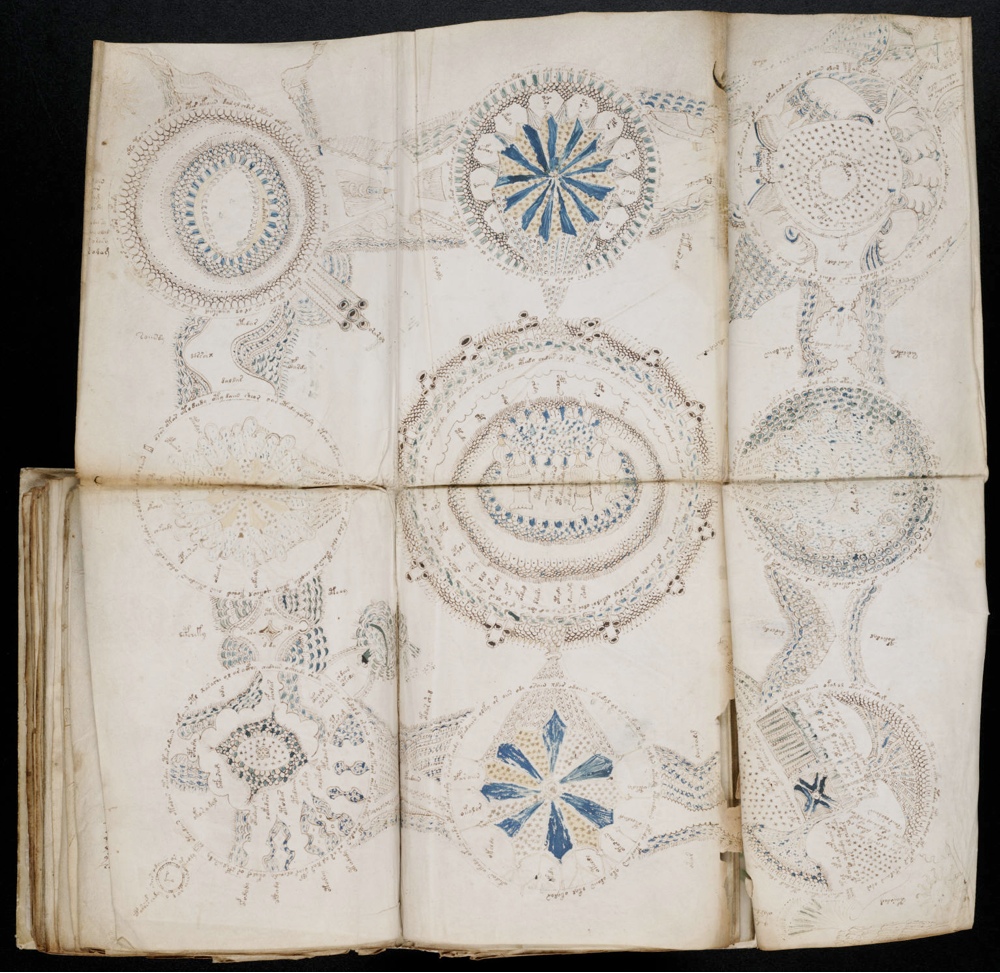Hoax or Secret Code? Copies of Unreadable Manuscript to Be Published

Armchair cryptographers, rejoice: A Spanish publisher plans to release replicas of the Voynich Manuscript, a book that no one knows how to read.
Discovered by an antique bookseller in 1912 by the name of Wilfrid Voynich, the 600-year-old Voynich Manuscript is housed today in Yale University's Beinecke Rare Book & Manuscript Library. It's filled with script in a language that's never been seen in any other known text —which, depending on whom you talk to, means it's nonsense or a secret code just waiting to be cracked.
According to AFP, a publisher called Siloe based in Burgos, Spain, will produce 898 copies of the Voynich manuscript, replicating every detail down to the pages'stains and tears. The publisher reportedly plans to sell each of the facsimiles for 7,000 to 8,000 euros (about $7,900 to $9,000). [See Images of the Mysterious Voynich Manuscript]
"It's a book that has such an aura of mystery that when you see it for the first time it fills you with an emotion that is very hard to describe," Juan Jose Garcia, the editor of Siloe, told AFP.
Many pages of the puzzling script include equally puzzling illustrations. The elaborate ink drawings depict astrological symbols, figural scenes and plants, including over 100 unidentified botanical species. As Yale writes in its description of the manuscript, there is one section full of "drawings of miniature female nudes, most with swelled abdomens, immersed or wading in fluids and oddly interacting with interconnecting tubes and capsules."
A few years ago, a radiocarbon analysis of the book's vellum pages proved that it dates back to the 15th century. But even if the book is genuinely old, some researchers have dismissed the manuscript as a Renaissance-era hoax text, intentionally filled with gibberish. (Or, as one paper published by the American Botanical Council succinctly put it, "Many scholars consider research into the Voynich manuscript to be academic suicide.") Others think the manuscript is a cipher that just hasn't been cracked, and theories about the text's contents and origins abound.
A 2013 study published in the journal PLOS ONE claimed that "Voynichese"statistically adhered to linguistic rules. The authors of that study couldn't decode any words, but they could at least tell that the pattern of letters followed Zipf's Law, which holds that the most commonword in a language will appear about twice as often as the second most common word and three times as much as the third most common word and so on.
Sign up for the Live Science daily newsletter now
Get the world’s most fascinating discoveries delivered straight to your inbox.
A few years ago, some scholars claimed the text must have come from Mexico, not central Europe as is traditionally believed, because it contained drawings of plants that look similar to Mesoamerican species. Another linguist claimed he deciphered a handful of words, including the word for Taurus, by looking for proper nouns next to their corresponding illustrations.
For now, you can peruse a digital copy of the book on the Beinecke Library's website.
Original article on Live Science.











